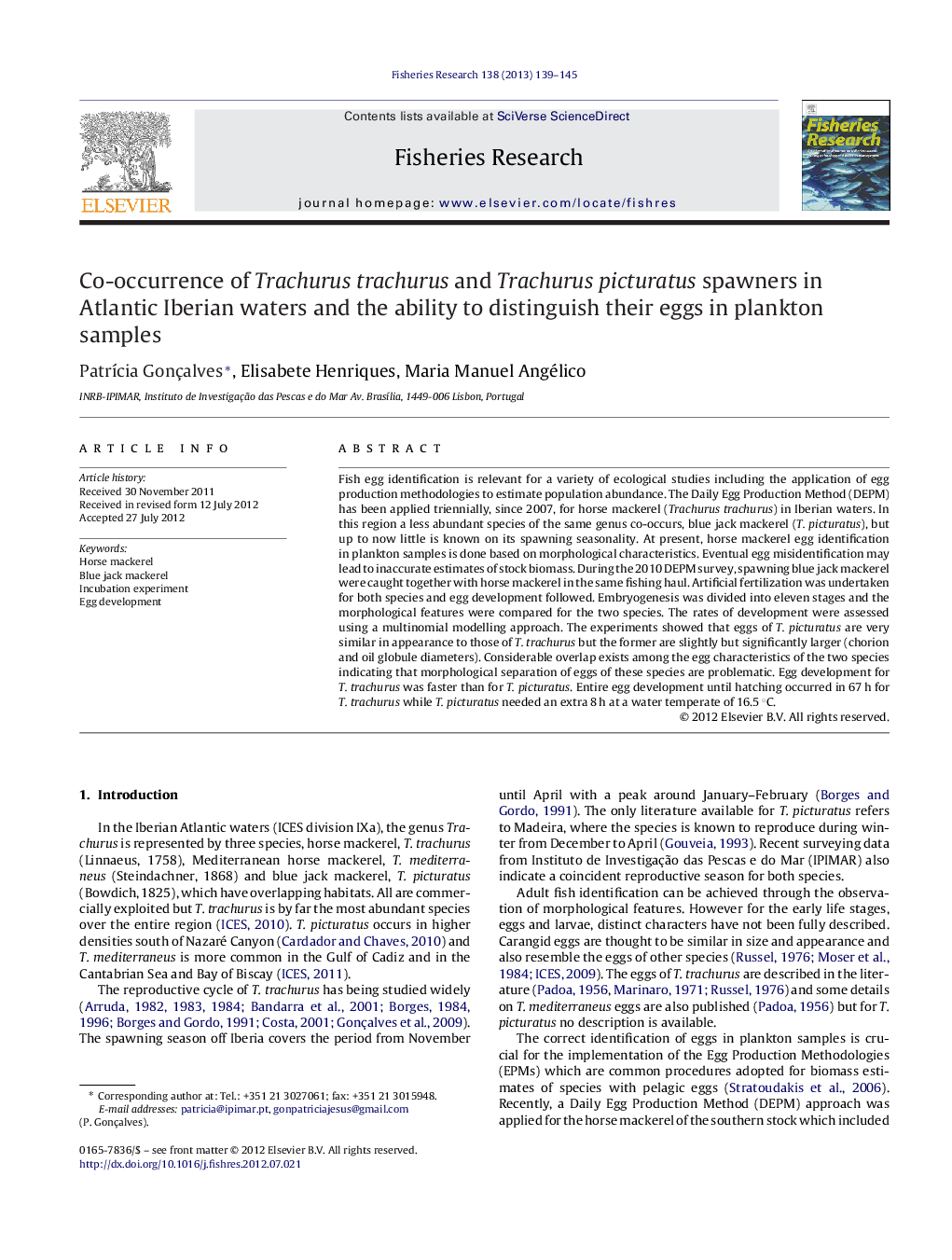| Article ID | Journal | Published Year | Pages | File Type |
|---|---|---|---|---|
| 4543227 | Fisheries Research | 2013 | 7 Pages |
Fish egg identification is relevant for a variety of ecological studies including the application of egg production methodologies to estimate population abundance. The Daily Egg Production Method (DEPM) has been applied triennially, since 2007, for horse mackerel (Trachurus trachurus) in Iberian waters. In this region a less abundant species of the same genus co-occurs, blue jack mackerel (T. picturatus), but up to now little is known on its spawning seasonality. At present, horse mackerel egg identification in plankton samples is done based on morphological characteristics. Eventual egg misidentification may lead to inaccurate estimates of stock biomass. During the 2010 DEPM survey, spawning blue jack mackerel were caught together with horse mackerel in the same fishing haul. Artificial fertilization was undertaken for both species and egg development followed. Embryogenesis was divided into eleven stages and the morphological features were compared for the two species. The rates of development were assessed using a multinomial modelling approach. The experiments showed that eggs of T. picturatus are very similar in appearance to those of T. trachurus but the former are slightly but significantly larger (chorion and oil globule diameters). Considerable overlap exists among the egg characteristics of the two species indicating that morphological separation of eggs of these species are problematic. Egg development for T. trachurus was faster than for T. picturatus. Entire egg development until hatching occurred in 67 h for T. trachurus while T. picturatus needed an extra 8 h at a water temperate of 16.5 °C.
